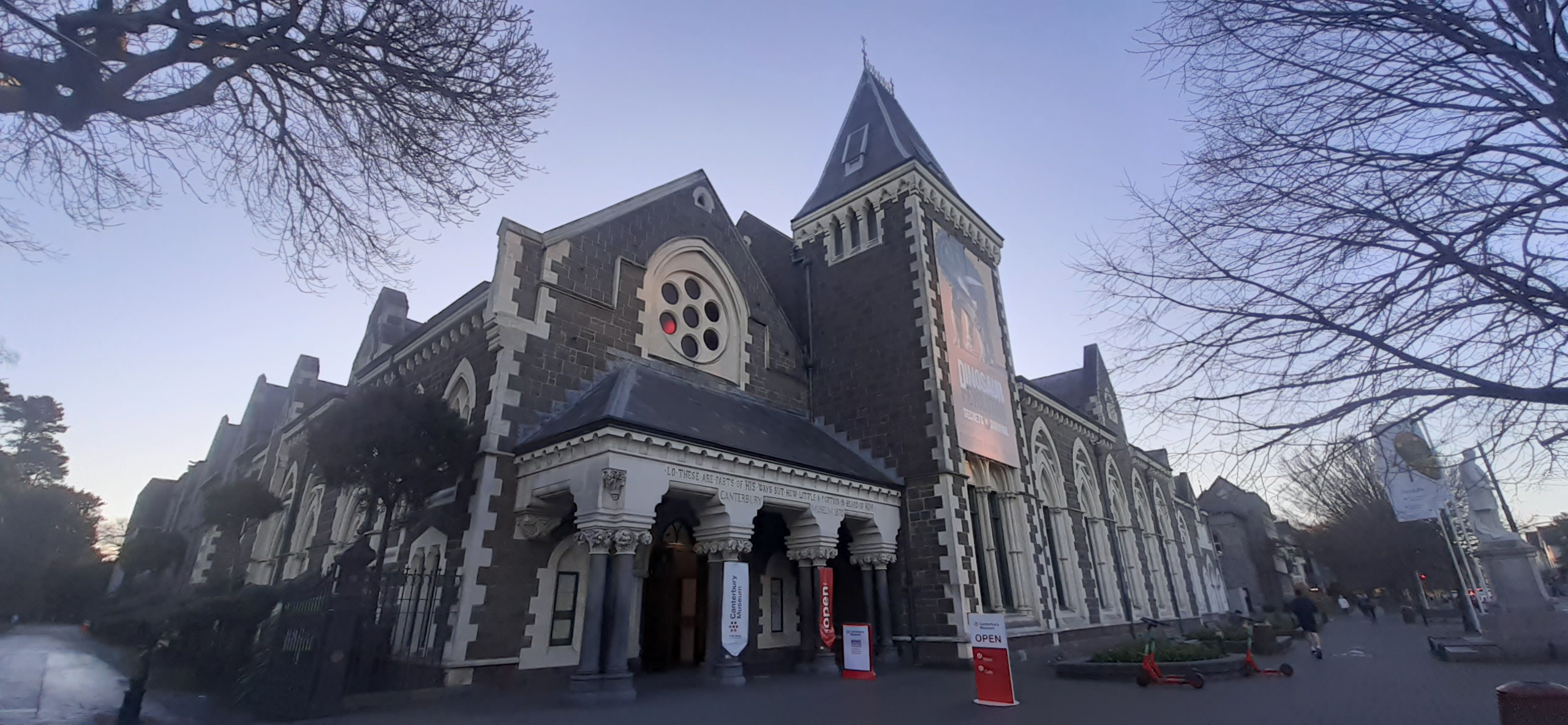.jpg)

Another visit home to New Zealand, and on top of my list of places to visit was Canterbury Museum. Canterbury Museum is located in New Zealand’s second largest city of Christchurch. The Museum opened in 1867, but moved to its current building in 1870, a Gothic Revival heritage building in Christchurch’s Cultural Precinct. It houses a collection of New Zealand and Christchurch’s social and natural history, as well as items from around the world.
It had been two and a half years since I last visited, and I was mindful that the museum in its current building would close for five years, moving to a smaller makeshift location in autumn 2023. The museum has an ambitious plan for its heritage building, that will allow an expansion and refresh of how it displays its collections. I’m excited about the plans, as the current museum can only display 1% of its collection, and the expansion will provide enough space to bring back a 27-metre blue whale skeleton that I remember seeing as a kid.
For many years, the museum’s permanent collections have stayed mostly the same, with the museum also hosting new, temporary exhibitions throughout the year. Having visited the museum through childhood and as an adult, I have fond memories of the permanent collections. It feels like coming home when I visit, as I can remember walking through the same collections at different ages of my life. I wanted to experience this one more time, before it’s closure and re-development.
.jpg)
There are too many collections to talk about, but I find myself going back to the same ones, or those that have become favourites in more recent times. When you start the visit, you walk through a re-creation of a Christchurch street in the central city from 1870-1901. The street has the sounds of horses and carriages, so you kind of feel like you are taking a stroll down a real high street. You can look at shop window displays and walk into some of the stores, with the shops having so many different items that would have been for sell in those times. I have an interest in antique porcelain, so get drawn to shops displaying porcelain that my family may have owned when they first came to New Zealand.
.jpg)
Just off the street is a place in the museum I treasure the most, the Mountfort Gallery. This was the first gallery in the museum, opened in 1870, housing a collection of moa bones (extinct native bird, largest species reaching 3.6 m (12ft) in height). It now houses the decorative arts and costume collection, typically from the Victorian period through to early 20th Century. I love looking at the furniture, porcelain and other items on the ground floor. I then make my way up to the first floor balcony to take in the kauri wood beams of the gallery and look down to imagine the moa collection that would have been displayed there in the late 1800s.
.jpg)
.jpg)
Then off for a wander through the Bird Hall, housing dioramas of New Zealand native species of birds, with memories of spending time in the hall as kid. Another exhibition with similar appeal to the kid in me is the Antarctic exploration exhibit, with the different type of vehicles and equipment used to explore the continent. I’ve always had a fascination with Antarctica; no doubt coming from being exposed in my earlier days to the equipment depot for the United States Antarctic program. The displays at the museum give you a real sense of how hard it would have been to explore the cold continent with the tools and clothing on hand.

A more recent favourite, is Fred and Myrtle's Shell House exhibit, showcasing a bit of kiwiana (items and icons from NZ's heritage, especially mid-20th century). The couple started attaching paua shells to the interior walls of their Bluff house in the 1970s, attaching more than a 1000 shells, and opened it up to any tourists who were interested. They became legendary in NZ and the exhibit is a tribute to their wonderful fun and vibrant spirit. The sound of organ music while you have a walk around adds to the visit, and is in recognition of Fred’s love of this type of music. I can remember seeing Fred and Myrtle on various tv programs and adverts when growing up, but never got to visit the house when they were alive. I’m glad the museum has the exhibit so I can experience it in some way, and take a trip down memory lane.
.jpg)

The museum has a bit of everything for everyone, it’s a great place to spend a few hours looking at the permanent collection, and seeing what new exhibitions are on offer. The Museum is open seven days a week and is free admission. If you are in the area, get in quick before the museum in its heritage building is closed for five years, I’m glad I did.
* * *

Living in Australia, but originally from New Zealand. Loves exploring and connecting with New Zealand history and heritage. Collects 19th century New Zealand tradesmen’s tokens. Delving into antique English ceramics, the ones that made their way to New Zealand and Australia. Sharing history and heritage on Twitter @ZealandEarly